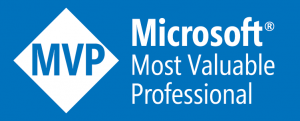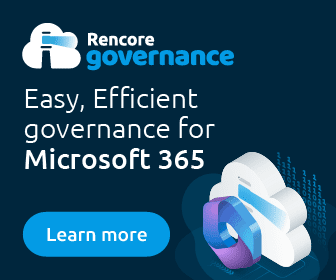The Ongoing Battle Against Employee Disengagement
Around the world, one obvious trend in the collaboration ecosystem is the increasing focus on employee adoption. It’s a no brainer — you can spend all the money in the world on technology, but if your employees don’t use it, you’ve failed. Organizations are questioning the value of their structured collaboration platforms, many of which evolved from outdated intranet portals and a presenter/audience content distribution methodology. While organizations have had some degree of success with these models, there has been a noticeable enthusiasm gap with end users — and the grand vision of many of these platforms, where employees gather to collaborate, has not been achieved. The danger with adoption planning, however, is focusing on the wrong metrics. Adoption is more than a successful on-boarding activity — true adoption is an ongoing activity.
Adoption = Engagement
Engagement is not something on a checklist that you cross off after launching a new SharePoint environment or after setting up all of your employees within Office 365 and pointing them to an online user manual. Engagement requires an ongoing strategy. Employee engagement is like a muscle, that needs to be developed — or it can atrophy. Disengaged employees can drain your organization of productivity, innovation, and especially employee morale.
What does employee engagement mean within the context of your collaboration platform and how do you track and measure it? How does engagement translate into improved business value? Most importantly, how do we keep people engaged?
Unfortunately, the answers to these questions are not as simple as deploying a new tool, or changing the configurations on your intranet. Most of the answers are wrapped up in “people issues” that require discussion and understanding. Sometimes we forget that the point of all of these tools and strategies is to get people to better connect and talk.
To succeed in collaboration overall and to help end users engaged and productive, you will need to establish some key habits and practices, namely:
- Focus on business outcomes, not technology
In my experience, I have seen more leaders guiding their organizations by metrics (management by spreadsheet) than by taking the time to really understand the issues their people are experiencing, working collaboratively to improve those experiences. The act itself of taking the time to understand the root cause of issues and focus on outcomes rather than the process of getting there (and nitpicking the mistakes made along the way) often proves to employees that you are making an effort to do the right thing, encouraging them to provide more information and helping to solve the problem faster and ultimately, helping to build trust within your collaboration platform.
- Provide transparency
People do not work well in an information vacuum. Take away transparency and people will go around you to try and solve their issues on their own. It’s amazing how quickly a planned and articulated communication strategy can affect how people react to the state of a project. The more you involve people in the process, the more likely they are to support that process and stay engaged.
- Manage organizational and cultural differences
We live in a “fix it” culture where problems surface, and we immediately want to run to them and solve them. But sometimes the best way to solve a problem is to allow the participants to find their own path. And if people understand that there is a method for resolving their differences, they are less likely to use a policy disagreement as a reason to disengage.
- Prepare for changing information needs
This is another great example of where regularly talking with your employees, or end users will impact how they view and participate within your collaboration platform. No matter how well you document the requirements of your system, end user needs will change. There’s a reason why agile development is becoming so pervasive — the rate at which our business needs change is increasing. A key to keeping people engaged is to ensure that the right data is available and in a timely manner.
- Stay on schedule
Similar to your communication strategy, holding to your communicated schedule for delivery of new features, new content, or things like extended permissions, or the creation of a new private group, is an important part of meeting your end user expectations. Of course, if your communication channels are open and people feel confident in their ability to voice opinions, you may be more capable of handling any schedule slips — but your goal should always be to hit that delivery schedule.
- Treat people like adults
Depending on the culture of your organization, this may not be an issue, but it’s worth pointing out that people feeling like they are not taken seriously or are being marginalized is often a sign of micro-management. The best-run collaborative platforms are where you are clear on the rules and guidelines and then you get out of the way and let people work. Be clear on what needs to be accomplished, but don’t dictate how people accomplish it.
- Leverage new technologies
Ultimately, our collaboration activities surround one or more key technology platforms. As with the changing information needs for your end users, it is important that you are aware of industry trends and innovations that may evolve or disrupt your platforms. A great example has been the disruption of traditional enterprise content management (ECM) platforms by social collaboration tools. Be aware of improvements to information worker workloads and stay ahead of your end users by testing out new solutions. If your team recognizes that you are constantly evaluating new technologies, looking for ways to improve, they are less likely to let their attention wander.
The fundamental role of management is to watch for and mitigate risks — and yet the level of engagement of end users is rarely a risk mentioned in most organizational planning sessions. Engagement should be one of your primary organizational metrics. Beyond an annual employee satisfaction survey, every team should have a dashboard of engagement metrics generated from your collaborations tools and platforms, with results shared company-wide so that they can be readily discussed at a team, or even a personal-level.
Clearly defined governance and consistent communications are at the core of end user engagement issues. If you’re experiencing serious issues with end user engagement, the first step is always to get a clear picture of where things are today — and be honest about what you see. Only with awareness can you begin to take the right steps forward and build out healthy collaboration practices within your organization.





